The revival of the idea of the National Pantheon (Üdvlelde) from Széchenyi practically accompanies the modern history of Gellért Hill, as well as the Citadel built after the defeat of the War of Independence in 1848-49. In addition, the design of the funicular has also attracted the attention of the general public from time to time.
In 1884, Guidó Fuchs, the chief engineer of MÁV, and the head of the control department of traffic and train expenses, was one of the first mastermind the steam funicular from Tabán to Gellért Hill. According to his plans, the funicular would have been built between Alsó Gellérthegy Street on the hillside and Alsó Sétány Street under the Citadel behind the Okenfusz house next to the Rudas Bath.
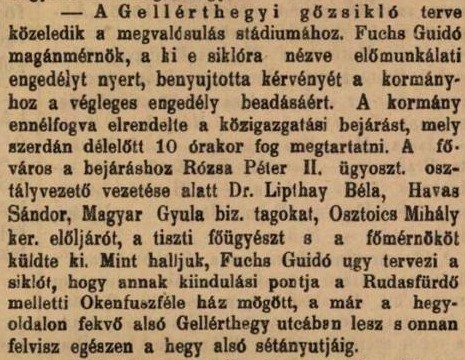
Press release on Guido Fuchs' plan. The plan stalled after the administrative tour (Source: Pesti Hirlap, 24 November 1884)
On 27 May 1884, Fővárosi Lapok announced: "Engineer Guidó Fuchs applied for a permit for the technical preparations for the steam funicular to Gellérthegy." Prior to the approval, the then Minister of Public Works and Transport Gábor Kemény sought the opinion of the city, which arrived on 21 June 1884. The Centralization Committee "welcomes the plan and does not wish to raise any objections from the city."
The general meeting on 11 July has already ruled that Fuchs is required to post a security deposit of 2,000 crowns to compensate for any damages. On 17 August, the Minister notified the General Assembly of his permission to begin preliminary work on the steam funicular. The dailies last reported on the developments on 24 November: “The plan of the Gellérthegy steam funicular is approaching the stage of implementation. Private engineer Guidó Fuchs, who had obtained a pre-work permit for this funicular, submitted his application to the government for a final permit. The government has therefore ordered an administrative tour, which will be held at 10 a.m. on Wednesday. ”
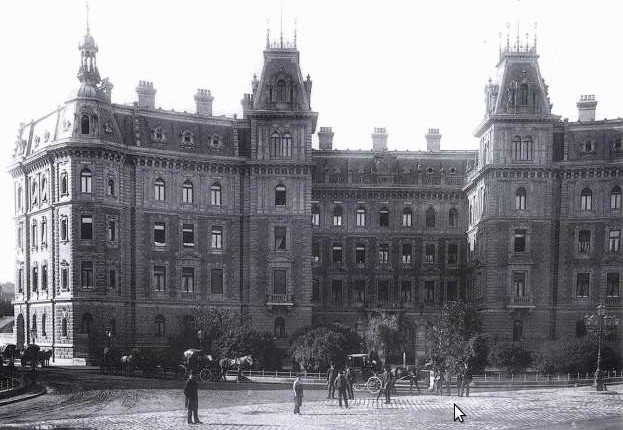
One of the residences of Guido Fuchs: an apartment building of the former MÁV Pension Institute under 83-85 Andrássy Avenue in 1883 on the photo of Károly Divald
The plan was then forgotten, and Fuchs Guido’s life took a tragic turn. The engineer from the Saxon, Zipser, Lutheran wholesaler family of Spiš was still married to Petrementch Clementina in the early 1880s, and in 1886, according to daily newspapers, she married Miss Eugenia Jungk. He moved frequently from one representative residence to another, living in the MÁV Pension Institute rental palaces in Kodály körönd, buildings at 85 Andrássy Avenue and 88-90 Andrássy Avenue, then at 102-104 Andrássy Avenue and in a house at 92 Király Street. Finally, he found a home in the family-owned house at 23 Sas Street. He resigned from the position of manager at MÁV in 1896, in 1899 he also said goodbye to the directorate of Péceli Szemere Fürdő Rt. and he came under guardianship. His ward, Paula Augusta Fuchs, took care of him.
A few years after Fuchs's plan, Siemens and Halske Budapest City Railway Company, which organized the Budapest tram traffic under the leadership of Mór Balázs and launched it in 1887, submitted a petition to Mayor Károly Ráth in August 1890. Permission was requested for the preliminary preparation of a tram from Láchíd to Rudas Baths, and an electric funicular from there to Gellért Hill.
.jpg)
Mór Balázs and the first tram in Pest launched by him (Source: Gábor Zsigmond: Balázs Mór élete és munkássága [The life and work of Mór Balázs] / mmkm.hu)
As the CEO of the Siemens company, Mór Balázs focused on the creation of direct traffic in the capital. His plan was to “make Gellért Hill easily accessible” and, in addition, “all parts of the city on the left side of the Danube would be connected to Buda”. After the construction of the new Danube Bridge after the already standing Chain Bridge and Margaret Bridge, it would have connected the Buda tram line with the tram on the embankment of Pest, thus creating direct traffic from Buda to the Outer Ring Road, to the Városliget and to Kőbánya.
.jpg)
Contemporary report on the plan of Mór Balázs and the Siemens and Halske Budapest City Railway Company (Source: Pesti Napló, 28 August 1890)
However, this plan did not even get approved, when a tragedy reached Mór Balázs too. A year after the underground railway was built under his leadership in 1896, he died of a heart attack in 1897 at the age of 48, leaving four children behind.
Chief Engineer Ede Vince Miller came up with the next plan for the Gellért Hill funicular in 1891. At that time, all indications were that Ede Vince Miller's funicular plan, developed jointly with architect Ferenc Novák, would be realized. The construction of the “electric cogwheel track” imagined from the mouth of Döbrentei Street to the top of Gellért Hill would have been connected with the demolition of the Citadel.
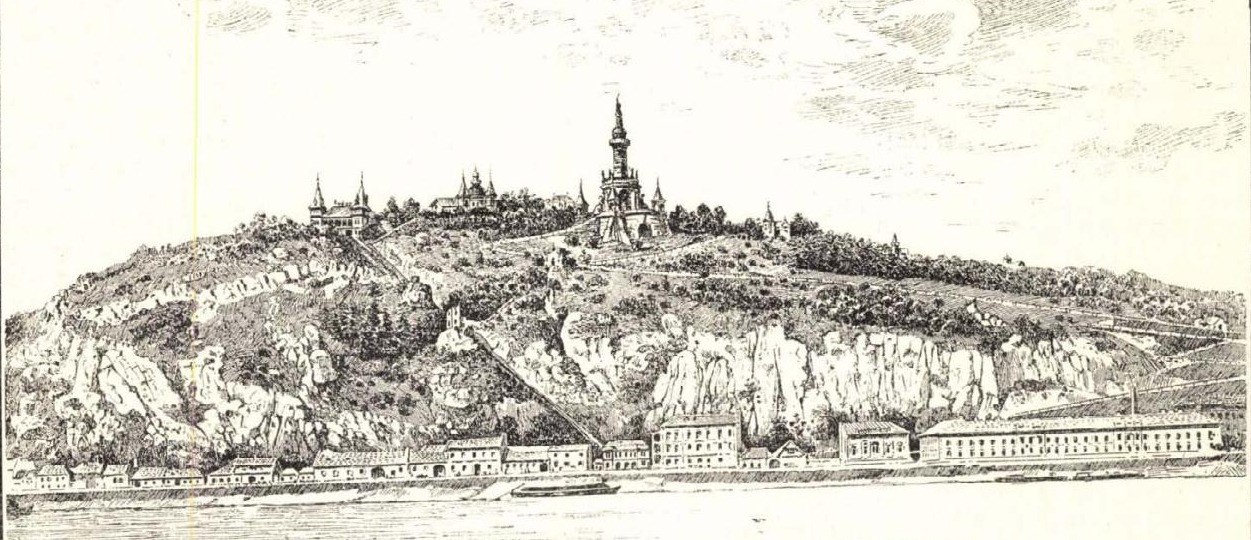
The plan started by Ede Vince Miller in 1891, a version of which had already been developed by Ferenc Novák was presented to the public in 1892, in the Vasárnapi Ujság (Source: Vasárnapi Ujság 20 March 1892).
On 22 May 1891, the Budapest Public Building Committee “made no objection in principle” to “the construction of an electric cog railway,” and the Metropolitan Assembly decided at its 8 July meeting to “yield the public spaces of the capital in principle for building the planned track”. In early September, the Minister of the Interior and the Minister of Commerce also approved the plan, followed by an administrative tour on 24 October and the consent of the Budapest Public Works Council.
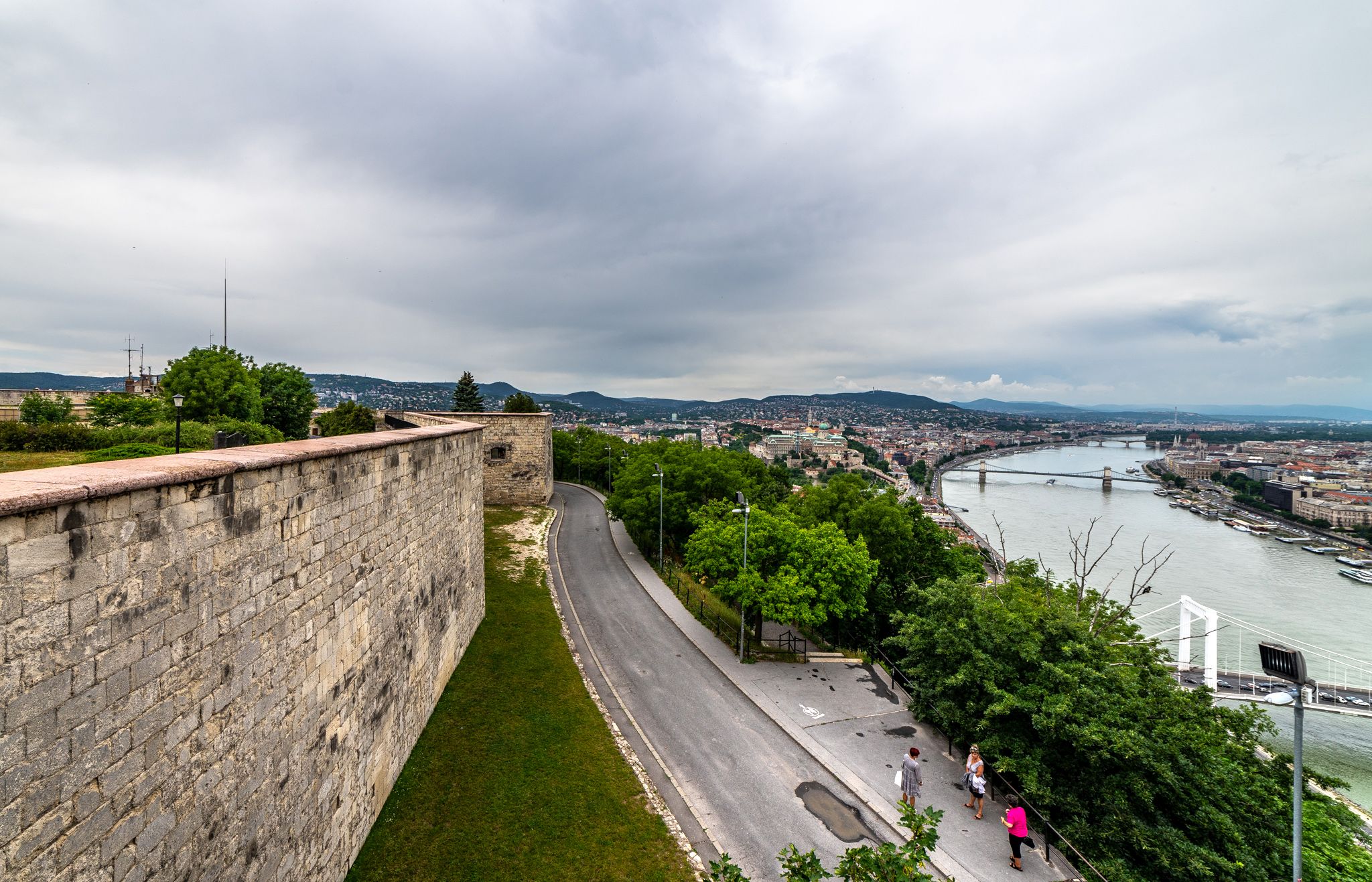 According to the latest plans, the Gellért Hill funicular, which will be completed by 2022, will transport passengers from Tabán to the Citadel (Photo: Balázs Both / pestbuda.hu)
According to the latest plans, the Gellért Hill funicular, which will be completed by 2022, will transport passengers from Tabán to the Citadel (Photo: Balázs Both / pestbuda.hu)
However, Miller did not build the cable car either, and in fact, at the general assembly of 6 November 1891, he applied for the transfer of the building permit to Novák. This was finally agreed on 9 February 1892 by the Finance and Economic Committee of the General Assembly. The name of Ferenc Novák was the one which became well-known as the designer of the Gellért Hill funicular, although his plan also stalled after its final approval in 1898.
In recent decades, the implementation of the Gellért Hill funicular has been on the agenda again. Since the mid-2000s, the Rác Sikló Kft. and now the Gellérthegyi Sikló Kft. have been pushing for construction.
It could be read in the spring that if the plans are approved, construction could begin in the fall, but there has been no news of the investment for some time.
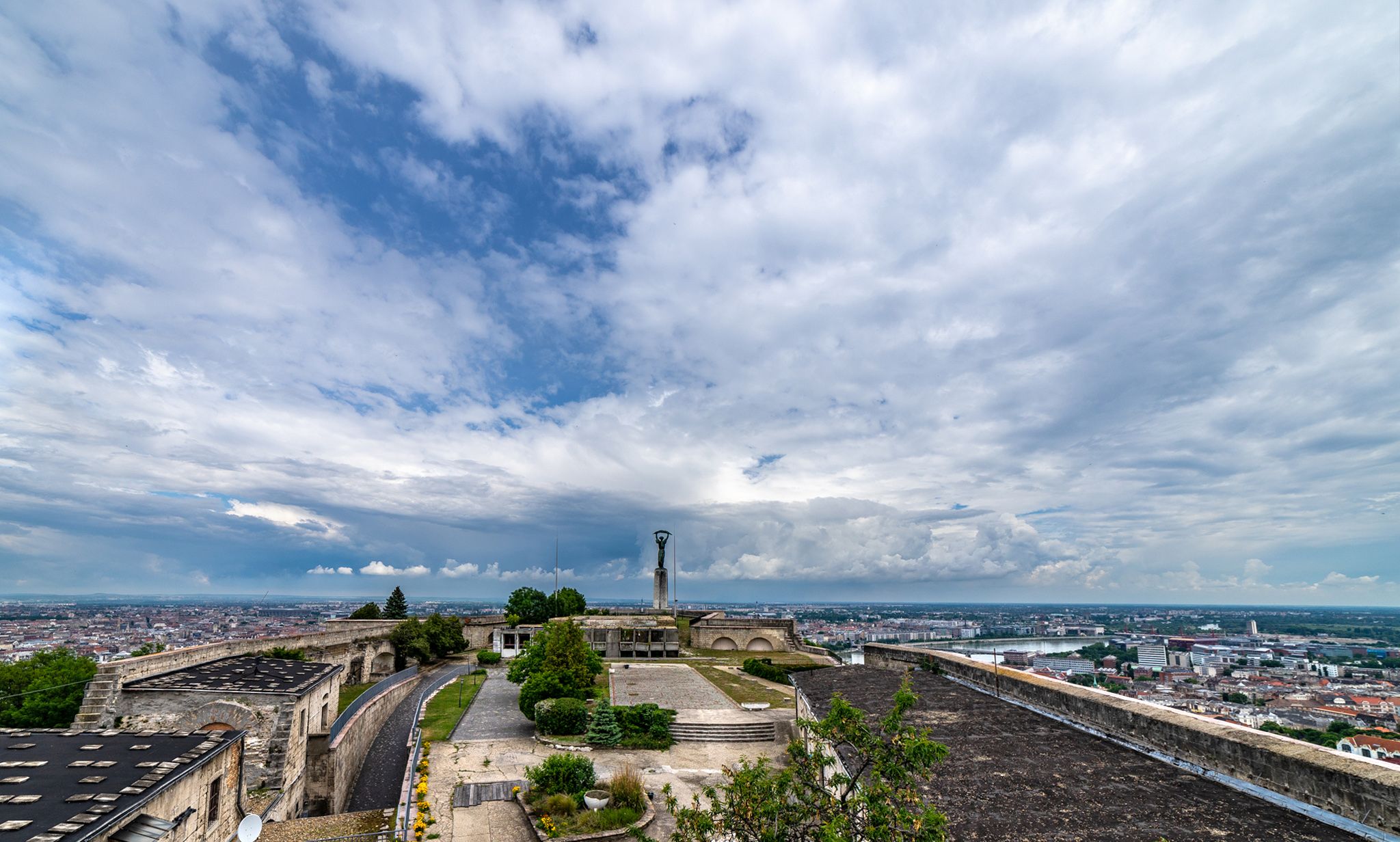
The terminus of the funicular would be near the Citadel (Photo: Balázs Both / pestbuda.hu)
Cover Photo: A contemporary plan for the Gellért Hill funicular, a version of the plan started by Ede Vince Miller in 1891 and developed by Ferenc Novák from 1892 (Source: Vasárnapi Ujság, 20 March 1892)

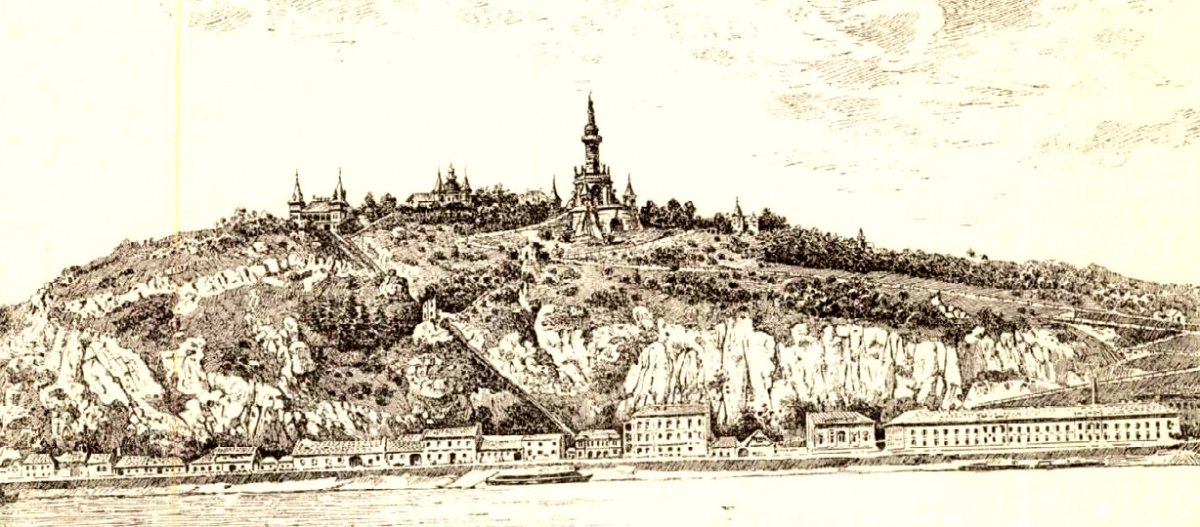



































Hozzászólások
Log in or register to comment!
Login Registration